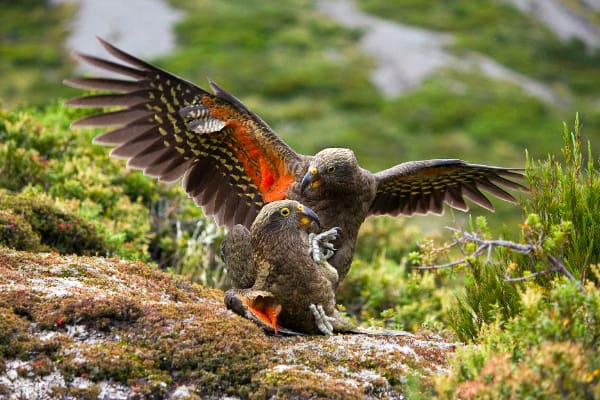Over 150,000 Kea were hunted across their range from the late 1800s to the 1970s as part of a bounty scheme. Although they are now protected, they are still occasionally shot. The species is threatened by depredation by introduced mammals, lead toxicity in the environment, window strikes, and human-wildlife conflict. Attacks by feral cats, stoats and possums account for 60-90% of failed nesting attempts.
The World Parrot Trust works in partnership with in-country organisations and wildlife rehabilitators to improve Kea chick survival in Nelson Lakes National Park, monitor wild nests, and rehabilitate, release and track Kea that have been injured or suffer poisoning. Also ongoing is public education on how to reduce human-Kea conflicts. In 2024, a dedicated field team captured nearly 300 wild Kea and installed tiny tags in their leg rings. A dozen tag readers across South Westland and Aoraki/Mount Cook National Park will help the team log visits and map tagged Keas’ movements.
Status: IUCN Endangered / CITES Appendix II
Population: About 6000, decreasing rapidly.
Threats: Is a restricted-range species. Affected by introduced predators. Other species and farming practices may be depleting food sources. Lead in the environment is harming birds.
Range: Occurs in mountainous areas of South Island, New Zealand, from Fiordland north to Nelson and Marlborough Provinces.
Natural history: This species is confined to forests in steep side valleys from 600-3000 m (1968-9840 ft); also seen around human settlements. It feeds on flowering mountain flax, rata, snow totara berries, fruits and leaves; also scavenges on carcasses. Active in early morning and late afternoon; playful and inquisitive, foraging around campsites and sometimes damaging cars and equipment. Breeding is July-January. Its nest is in a rock crevice or a hollow log.

